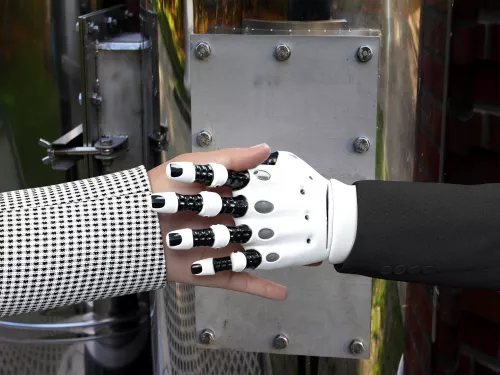Rosselkhozbank experts have identified a list of agro-industrial sectors in Russia where the introduction of robots has great potential for development, the bank's press service reported. According to iFORA, the HSE big data mining system, robotization of the agro-industrial complex is one of the main global agrotech and foodtech trends.
Although robotization has come to the Russian agro-industrial complex relatively recently, this area is developing at a rapid pace, estimates Elena Baturova, director of the Center for the Development of Financial Technologies of the RSHB. According to her, about 200 agrotech start-ups for the digitalization of agriculture are now represented on the RSHB-Digital platform. Although robots are not able to completely replace human labor, they are already helping to optimize and speed up production processes. “Over the next few years, individual products will travel from field to door with minimal human intervention,” she says.
The Cherkizovo-Kashira plant for the production of raw smoked sausages, built in 2018, has become the flagship of robotization in the Russian agro-industrial complex, analysts of Rosselkhozbank say. All production processes at the enterprise from receiving raw materials to packaging finished products are automated, as a result of which labor productivity at the plant is four times higher than at a traditional meat processing enterprise. Rosselkhozbank analysts believe that it was not by chance that a fully robotic enterprise appeared first in the production of raw smoked sausages: smoked and dried sausages are high-margin products and a large amount of manual labor is usually used in their production.
“The traditional industrial design of old meat processing plants built within the city is no longer considered effective,” comments Andrey Dalnov, head of the Rosselkhozbank Center for Industry Expertise. - Robotic production will be gradually moved to areas with less dense buildings, which will allow placing equipment on one floor over a larger area. This raises the possibility of robotization, depending on the range and availability of labor in a particular region.”
Dairy cattle breeding and the production of dairy products, in particular marginal ones - cheeses, butter, yogurts, can also be a promising industry for the transition to a robotic production model.
In crop production, vertical farms producing salads for hyperlocal consumption within large cities may become the first fully robotic enterprises, analysts at Rosselkhozbank believe. A robotic vertical farm can be twice as efficient in terms of labor and land use as a traditional modern greenhouse that uses only one level to grow produce, Baturova compares. According to Dalnov, the massive emergence of robotic vertical farms will be especially logical in the territory from the Urals to the Far East - in regions that have problems with logistics, infrastructure and insolation.
“However, despite the obvious advantages of robotization — the growth of labor productivity, the release of land — the end point in the development of this trend, as well as the digitalization trend, is unlikely to be the complete displacement of labor from individual sub-sectors of the agro-industrial complex,” continues Dalnov. “Rather, in 10-20 years, polarization will occur: mass cheap products will be produced in large robotic enterprises, and products for thoughtful consumption, especially for the HoReCA channel, on small farms.” Thus, the departure of the labor force in one segment of production will be compensated by its more intensive use in another, he concludes.
© Inline LLC 2015-2025. Privacy Policy | Terms of Service